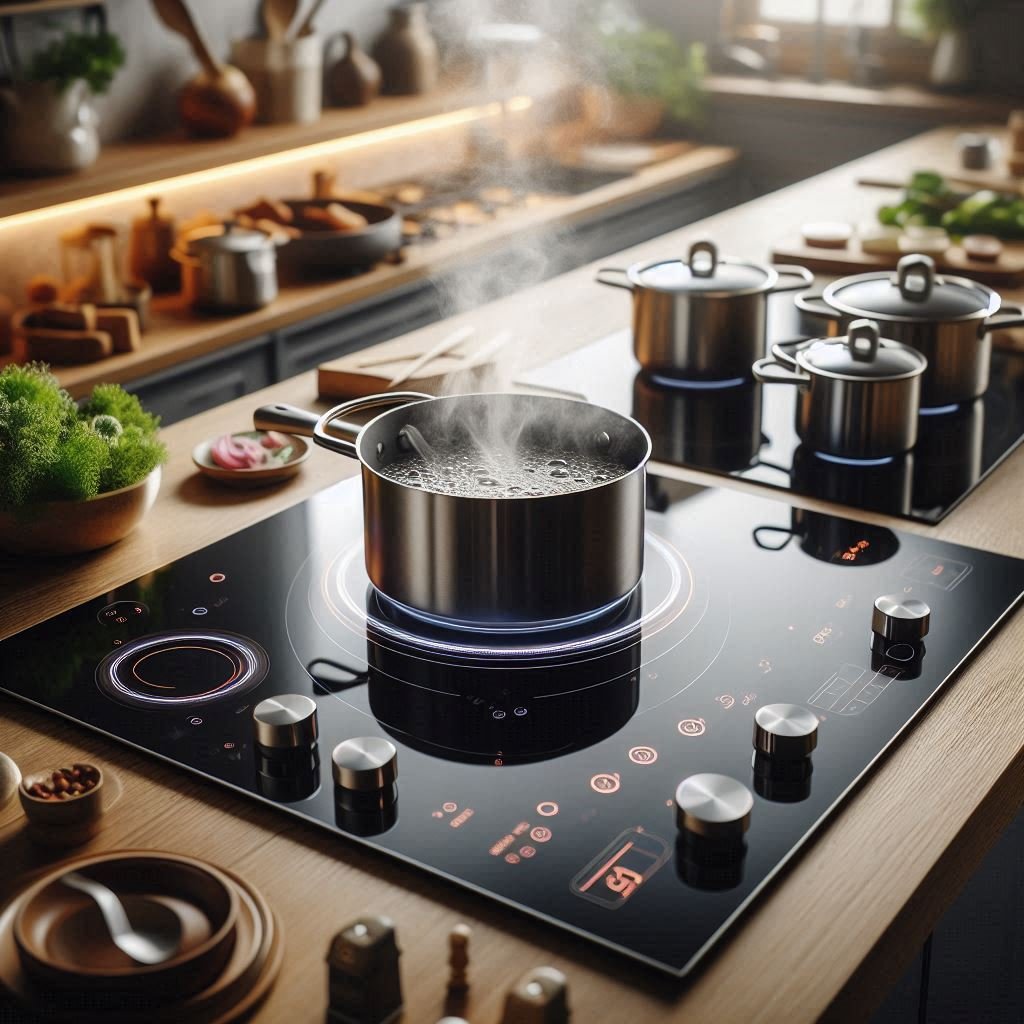When it comes to choosing the perfect cooking surface for your kitchen, there are numerous options available. Among them, two popular choices are solid plate and ceramic hobs. These cooking surfaces have their own unique characteristics, advantages, and disadvantages. In this blog post, we’ll delve into the details of both solid plate and ceramic hobs, helping you make an informed decision for your culinary endeavors.
Solid Plate Hobs: Traditional Reliability
Solid plate hobs, also known as electric coil hobs, have been a staple in kitchens for decades. These hobs consist of metal coils that heat up when electricity passes through them. The cookware is then placed directly on top of these coils, allowing for direct heat transfer. Here are some key factors to consider when it comes to solid plate hobs:
1. Cost-Effective Option: One of the main advantages of solid plate hobs is their affordability. These hobs tend to be more budget-friendly compared to their ceramic counterparts. If you’re looking to equip your kitchen with a functional and economical cooking surface, a solid plate hob might be the right choice.
2. Even Heat Distribution: Solid plate hobs provide relatively even heat distribution across the cooking surface. This is beneficial for tasks that require consistent temperature, such as simmering or slow cooking. Additionally, the coil design allows for a wide range of cookware to be used, from flat-bottomed pans to curved pots.
3. Durability: Solid plate hobs are known for their durability and resistance to physical damage. The metal coils are less likely to crack or shatter compared to glass-ceramic surfaces, making them a long-lasting option for your kitchen.
Ceramic Hobs: Modern Elegance
Ceramic hobs, often referred to as glass-ceramic hobs, bring a touch of modern elegance to your kitchen. These hobs feature a sleek and smooth glass surface with heating elements placed beneath. The glass-ceramic material allows for a minimalist appearance while offering its own set of advantages:
1. Aesthetics and Easy Cleaning: Ceramic hobs are known for their aesthetic appeal. The sleek and glossy surface adds a contemporary touch to your kitchen decor. Moreover, cleaning a ceramic hob is a breeze – a simple wipe with a damp cloth usually suffices to keep it looking pristine.
2. Rapid Heating and Energy Efficiency: Compared to solid plate hobs, ceramic hobs heat up more quickly. The smooth surface allows for efficient heat transfer to the cookware, reducing cooking time and energy consumption. This can be a significant advantage for those who are often pressed for time.
3. Precise Temperature Control: Ceramic hobs offer precise temperature control, allowing you to fine-tune your cooking settings according to your recipe requirements. Some models even feature advanced touch controls and digital displays for added convenience.
Considerations When Choosing Your Cooking Surface
Before making your final decision, there are a few more important considerations to keep in mind:
1. Cooking Techniques: Think about the type of cooking you frequently engage in. If you enjoy slow cooking, simmering, and tasks that require consistent heat, a solid plate hob’s even distribution might be preferable. On the other hand, if you often sear, sauté, or need rapid changes in temperature, a ceramic hob’s quick heating ability could be more advantageous.
2. Cookware Compatibility: Solid plate hobs are generally more forgiving when it comes to the types of cookware you can use. They can accommodate a wider range of pans, including those with slightly uneven bottoms. Ceramic hobs, however, require flat-bottomed cookware to ensure optimal heat transfer and prevent damage to the glass surface.
3. Safety Concerns: Both solid plate and ceramic hobs have their safety considerations. Solid plate hobs can retain heat for a while after being turned off, so you need to exercise caution. Ceramic hobs, while offering quicker heating and cooling, can also stay hot after cooking. Some ceramic hobs come with residual heat indicators to help prevent accidental burns.
4. Installation and Maintenance: Installing a ceramic hob often requires professional assistance due to its delicate glass-ceramic surface. On the other hand, solid plate hobs are relatively straightforward to install. Maintenance-wise, ceramic hobs require gentle cleaning to prevent scratches or damage to the glass surface, while solid plate hobs are easier to clean but might accumulate food debris around the coil area.
5. Energy Efficiency: Ceramic hobs are generally more energy-efficient due to their rapid heating capabilities and precise temperature control. If energy conservation is a priority for you, a ceramic hob might be a better choice in the long run.
6. Aesthetics and Kitchen Design: Consider the overall aesthetics of your kitchen. Ceramic hobs’ sleek and modern appearance can complement contemporary kitchen designs, while solid plate hobs might be more suitable for traditional or rustic settings.
7. Budget: Your budget plays a crucial role in your decision. Solid plate hobs are often more budget-friendly upfront, but it’s worth considering long-term energy costs and maintenance expenses when making your choice.
Conclusion: Cooking Surface Tailored to You
In the solid plate vs. ceramic hob debate, there’s no definitive answer that fits everyone. The decision largely depends on your individual preferences, cooking habits, and priorities. Both options offer distinct benefits that can enhance your culinary experience, and both have their own set of drawbacks that you need to weigh against those benefits.
Before making your final decision, take some time to assess your cooking needs, kitchen design, and budget. If possible, visit showrooms or test out both types of hobs to get a feel for their performance and ease of use. By doing so, you can confidently select a cooking surface that not only meets your requirements but also adds a touch of style to your kitchen space.
In the end, whether you opt for the reliable tradition of solid plate hobs or the modern elegance of ceramic hobs, the cooking surface you choose will become an integral part of your kitchen’s personality, reflecting your unique culinary journey and preferences. Happy cooking!

